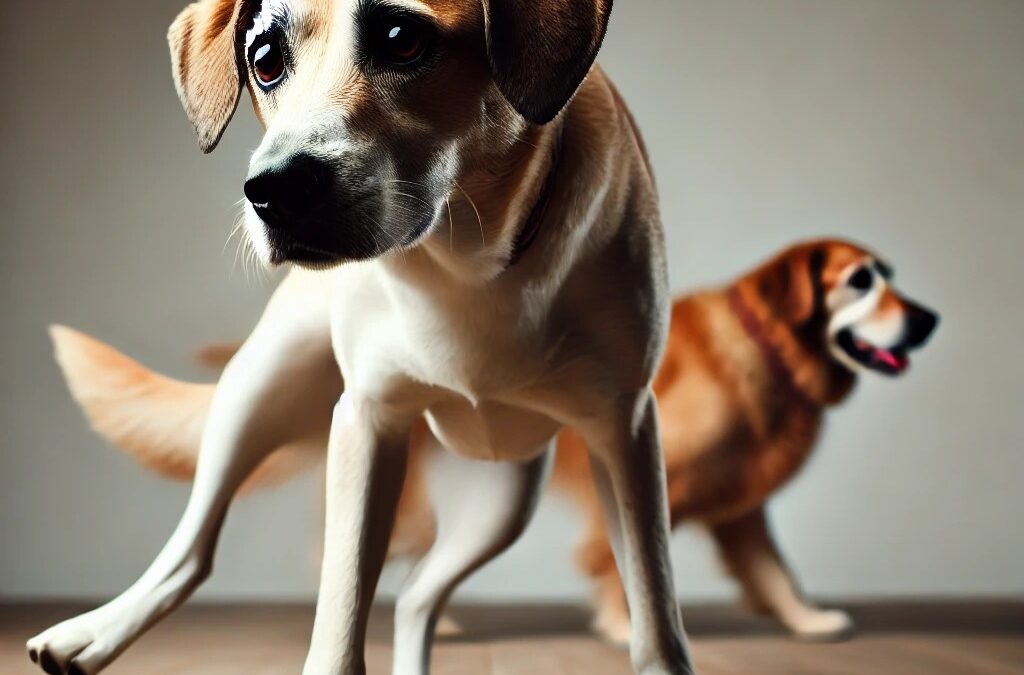When we think about canine cancer, the focus often falls on tumors and their direct effects. However, the impact of cancer on a dog’s balance and coordination is a crucial aspect that can significantly affect their quality of life. This article explores how cancer affects these critical functions and what pet owners can do to help their furry friends navigate these challenges.
The Connection Between Canine Cancer and Balance Issues
1. Brain Tumors and Neurological Effects
Brain tumors are a primary cause of balance and coordination issues in dogs. These tumors can interfere with the brain’s normal functions, including those that control movement and balance. Symptoms might include:
- Head Tilt: A noticeable tilt of the head to one side.
- Circling: Walking in circles rather than a straight line.
- Stumbling and Falling: Difficulty maintaining balance, leading to frequent falls.
- Seizures: Uncontrolled movements that can affect overall coordination.
2. Inner Ear Tumors
The inner ear plays a vital role in maintaining balance. Tumors in this area can disrupt the vestibular system, leading to:
- Dizziness: Dogs may appear disoriented and unsteady.
- Nystagmus: Rapid, involuntary eye movements.
- Loss of Coordination: Difficulty walking or standing normally.
3. Metastatic Cancer
Cancer that spreads from its original site to other parts of the body can also affect balance and coordination. For example, cancer that metastasizes to the spine can compress the spinal cord, impacting a dog’s ability to walk and maintain balance.
Symptoms to Watch For
Early detection is key to managing balance and coordination issues in dogs with cancer. Symptoms to monitor include:
- Unsteady Gait: Walking with a wobble or unsteady steps.
- Lack of Coordination: Difficulty performing routine movements.
- Reluctance to Move: Avoiding physical activity due to discomfort or instability.
- Frequent Falls: Tripping or falling more often than usual.
- Eye and Head Movements: Abnormal eye movements or head tilting.
Diagnosis and Treatment
Proper diagnosis and timely intervention can help manage the impact of cancer on your dog’s balance and coordination. Veterinary care may include:
1. Neurological Examination
A comprehensive neurological exam can help identify the underlying cause of balance issues. This may involve:
- Reflex Tests: Checking limb reflexes and responses.
- Eye Movement Assessment: Observing for nystagmus or abnormal eye movements.
- Gait Analysis: Evaluating walking patterns and coordination.
2. Imaging Techniques
Advanced imaging techniques like MRI and CT scans can detect tumors in the brain, inner ear, or spine, providing a clear picture of the affected areas.
3. Treatment Options
Treatment depends on the type and location of the cancer. Options may include:
- Surgery: Removing tumors that are accessible and operable.
- Radiation Therapy: Targeting tumors with radiation to shrink them and alleviate symptoms.
- Chemotherapy: Using drugs to slow tumor growth and spread.
- Supportive Care: Medications to manage symptoms and improve quality of life.
Supporting Your Dog at Home
Helping your dog cope with balance and coordination issues involves making some adjustments at home:
1. Safe Environment
Ensure your home is free from obstacles that could cause your dog to trip or fall. Use non-slip mats and remove clutter from pathways.
2. Assistive Devices
Consider using harnesses or support slings to help your dog move around safely.
3. Gentle Exercise
Encourage gentle exercise to maintain muscle strength and coordination, but avoid activities that could cause falls or injuries.
4. Regular Veterinary Visits
Keep up with regular veterinary check-ups to monitor your dog’s condition and adjust treatments as necessary.
Canine cancer can significantly impact a dog’s balance and coordination, but with early detection, appropriate treatment, and supportive care, you can help your furry friend navigate these challenges. By staying vigilant and proactive, you can ensure your dog maintains the best possible quality of life.















